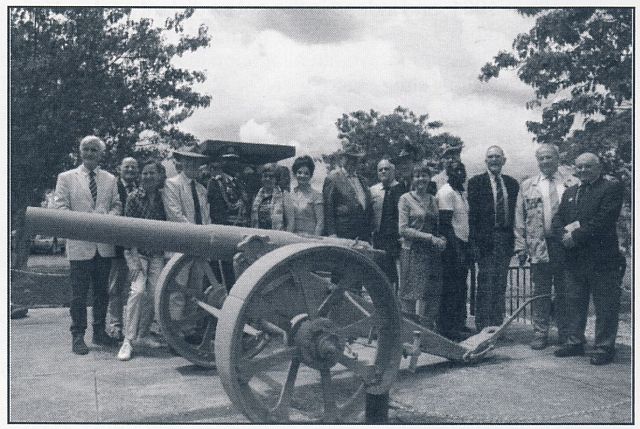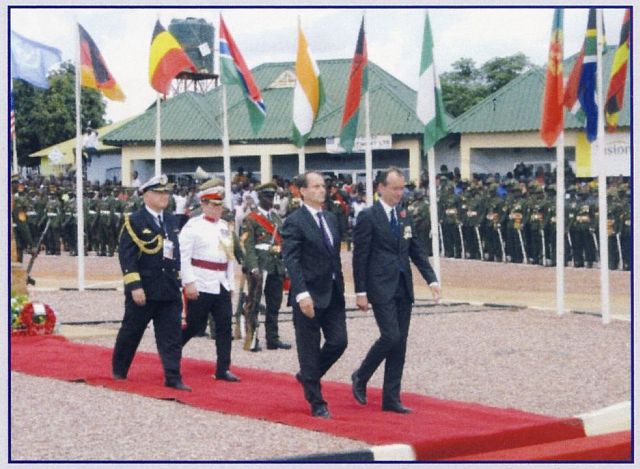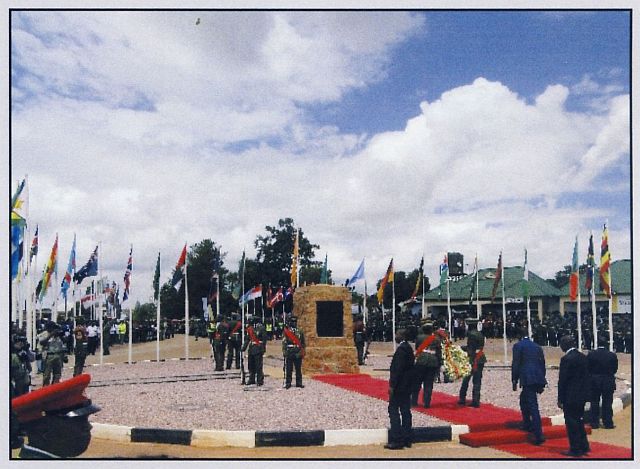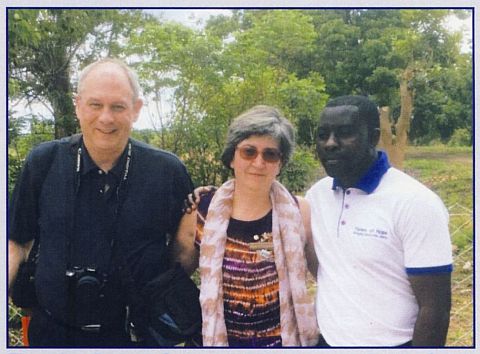

 The South African
The South African
On 25 November 2018, two weeks to the day after Armistice or Remembrance Day commemorating the centenary of the end of the First World Waron 11 November 1918, other gatherings took place in at least two African countries. The first was in Kenya at the spot where some of the firstshots of the war had been fired, the other in Zambia at Abercorn (Mbala) where the Germans laid down their arms to bring the war in Africa to an end.
I was privileged to be part of a contingent which travelled to Mbala, Zambia, for the national event. The day before, we had a small personal service at the Chambeshi Memorial, which marks the area where the news of the Armistice was made known to the German forces under Paul von Lettow-Vorbeck. (The monument was moved higher up the bank in the 1960s).
The contingent consisted of representatives of the King’s African Rifles and East African Forces Association (KAR EAFA), the Great War in Africa Association (GWAA) and Countess Mountbatten’s Own Legion of Frontiersmen, as well as General Lord Richards, representing the Royal Commonwealth Ex-Services League, British military officials, Brigadier- General Oscar Chapula, Defence Attaché to London, Graf Hans-Casper zu Rantzau, grandson of Paul von Lettow-Vorbeck, and Peter Jones of the Zambian Tourism Board. Within the group were grandchildren and nephews of the German commander, the RSM 1/4 KAR, and the Political District Officer of Abercorn, who had all been present at the 1918 event officiated by General W F S Edwards of the Uganda Police at the direction of the then South African Commander-in-Chief East Africa, General Jaap van Deventer. Also present were the grandson of a Kenyan settler and, at the national event, the grandchildren of a German settler and his Tanzanian camp follower. At the event on 24 November, the driver of a couple of journalists travelling with us, Themba, represented the local Tonga people, who had supplied carriers rather than Askari during the war.
Although the main focus was on Zambia and the war in East Africa, the commemoration provided an opportunity to remember all of Africa which had been caught up in the conflagration that became known variously as the Great War, First World War, World War One, and the ‘war to end all wars’.
Despite the much-needed rains having started, they held off for both the significant gatherings. Local villagers turned out to see what was happening at Chambeshi on 24 November, and an audience of over ten thousand joined the Zambian President and diplomatic representatives for the following day’s national event. As with services in other countries, the German Ambassador and British High Commissioner went up together to pay their respects – the significance being that, for East Africa, neither side was a victor.

To show their respects to relatives who fought in the war, a small,
personal commemoration was held at Chambeshi, 24 November 2018.
It was here that the German forces under von Lettow-Vorbeck
received the news of the Armistice in 1918.
MILITARY COMMEMORATIONS…
ZAMBIA
These events were preceded by some other personal moments: Paying respects alongside German Professor Stefan Manz of the University of Aston, United Kingdom, at the Johannesburg Cenotaph on 11 November, and taking advantage of a photographic opportunity on 12 November with the British High Commissioner and German Ambassador, who jointly opened a very successful conference at UNISA on the legacy of the war in Southern Africa.

Remembering together: British and German
representatives at the official Zambian wreath-laying
ceremony at Mbala, 25 November 2018.

To commemorate the centenary of the end of the Great War in Africa,
Zambia held a national event at Mbala on 25 November 2018.
In short, November 2018 was a poignant month in my journey as an historian of the First World War in Africa. Alongside the experiences above, there was the opportunity to stay on the estate of Shiwa Ngandu, the English mansion built by Stewart Gore-Browne, now run by his grandson Charlie and his wife Jo. Having been there before, this visit had two added dimensions: firstly, the knowledge that Charlie’s godfather was Yoram Pia, the man who had carried the white flag alongside Frank Rumsey and Mr Davey, Assistant Native Commissioner, into Kasama to inform von Lettow-Vorbeck of the end of the war; and secondly, that Bulaya, an employee of Gore-Browne’s, had absconded on route to port in England in 1915 and, subsequently, under the assumed name of Samson Jackson, had joined 9 London Regiment (later Middlesex Regiment), serving in Europe and the Middle East and only demobilising in 1921. Jackson was one of two black Africans known to have served in an armed capacity in Europe. The other was Frederick Njilima of Malawi.
The commemoration ended with a formal dinner at Shiwa, which provided an opportunity to again pay respects to those who had served in Africa, but, just as significantly, a toast was made to all those from Africa who had served in Europe – men and women of all colours and in all capacities, those who died, those who survived (many of whom had to live with hidden wounds) and all their families who silently paid an incalculable price in so many different ways. They all did their bit, willingly or otherwise, in the hope of making our world a slightly better place. It was an absolute privilege to pay my respects to the men of women of yesteryear and today on home soil.

The writer, Dr Anne Samson (centre)
representing the Great War in Africa Association,
Countess Mountbatten’s Own Legion of Frontiersmen,
and the King’s African Rifles & East African Forces Association,
flanked by husband John and Themba
at Chambeshi Memorial, 24 November 2018.
Return to Journal Index OR Society's Home page
South African Military History Society / scribe@samilitaryhistory.org